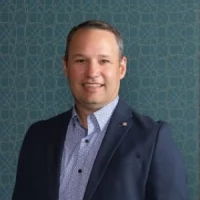Tell me if this sounds familiar: you’re a busy business owner focused on maximizing opportunities today, accumulating many different assets along the way. You are extremely skilled at deploying capital toward a promising deal and increasing the value of your business. But who is helping ensure you have adequate liquidity in both your personal and business investments? How do you determine when to sell a vehicle, property, or even your business? At Cable Hill Partners we help our clients determine appropriate levels of liquidity for their short-term, intermediate, and long-term goals. This is known as the Bucket Strategy.
The basic concept of the Bucket Strategy is straightforward: dedicate specific resources to fund your short-term (0-3 years), intermediate (3-10 years), and long-term (10+ years) goals. Where we excel is helping you identify those goals and align your resources toward accomplishing them. We also provide guidance on tax efficiency and help connect the dots between your personal and professional financial strategy.
Short-term bucket/goals (0-3 years):
This bucket is potentially the simplest to identify: you have an immediate expense, and you need cash to pay for it. It’s a simple matter if you have the liquidity to fund the expense; if not, this can be a stressful and challenging time, especially if you are forced to sell assets at a loss to pay for the expense. Consider a business owner who purchased a new company vehicle: it lowered her tax bill for that year, but did she consider upcoming expenses and liquidity needs? We actively help our clients plan for future expenditures and keep necessary funds in cash, in addition to helping them determine how a short-term decision will impact their long-term goals. Cash for short-term goals is not to be invested in the markets, in real estate, or other business opportunities.
Example: a business owner has $600,000 between personal and company bank accounts, with anticipated spending of $400,000 over the next two years. We would recommend the client move $200,000 into their intermediate or long-term bucket to be utilized toward more distant goals as appropriate.
Intermediate-term bucket/goals (3-10 years)
The middle bucket can be the hardest to identify. Often referred to as the “Freedom Bucket,” this bucket serves to fund goals between 3 and 10 years in the future and plays a crucial role in liquidity planning. Your goals may include education for a family member, a down payment on a dream home, or helping to maintain lifestyle between business ventures. We often see business owners with great short-term and long-term buckets but lacking a middle bucket. You may be inclined to hold onto excess cash in anticipation of expenses, on the one hand, or invest in long-term assets that take time to liquidate, on the other. Without a clearly defined strategy, you run the risk of not being able to replenish your short-term bucket for unexpected expenses.
Example: A client with a mature business has focused on maximizing his annual retirement account contributions but hasn’t considered liquidity needs as he prepares for his next venture, or as a component of his exit strategy. We would work with the client to strategize funding his middle bucket, ensuring that he has sufficient funds for his next project accessible without penalty. Implemented at the right time, these strategies may also help the client control taxable income in his later years. For business clients seeking to transition away from their companies before age 65, we’ll also plan for funding medical expenses and insurance premiums until they become eligible for Medicare.
Long-term bucket/goals (10+ years)
Often associated with retirement savings, long-term goals and the resources to fund them are typically our highest risk assets, needing the longest runway for value creation. Think of your growth-oriented stock portfolio, bare land you plan to develop, or the company you built and run. The goal for this bucket is to give these assets time to grow, and to allow funds to flow into the middle bucket as the timeframe for these goals moves forward. Considerations surrounding this bucket can be complicated, including tax implications and estate planning. Whether you have an established company or a rare art collection, how do you ensure your heirs will have enough liquidity to cover estate taxes without having to sell assets?
Example: Many business owners plan to sell or transition their business to fund their next chapter. At this crucial juncture, we can help coordinate valuations, estate planning, and tax planning, ensuring that our clients’ personal goals remain in sight as they move through this complex decision process.
At Cable Hill Partners, we work with our clients to establish short-term, intermediate and long-term financial goals, making sure to designate the proper assets to each bucket. Along the way, we can identify speed bumps that can cause your journey to veer off track, and the action steps needed to maintain a healthy pace toward your goals. If you are a business owner with a complex balance sheet, and you’d like to gain clarity around your buckets, working with Cable Hill Partners can help provide clarity to your situation and peace of mind to your vision for the future.



